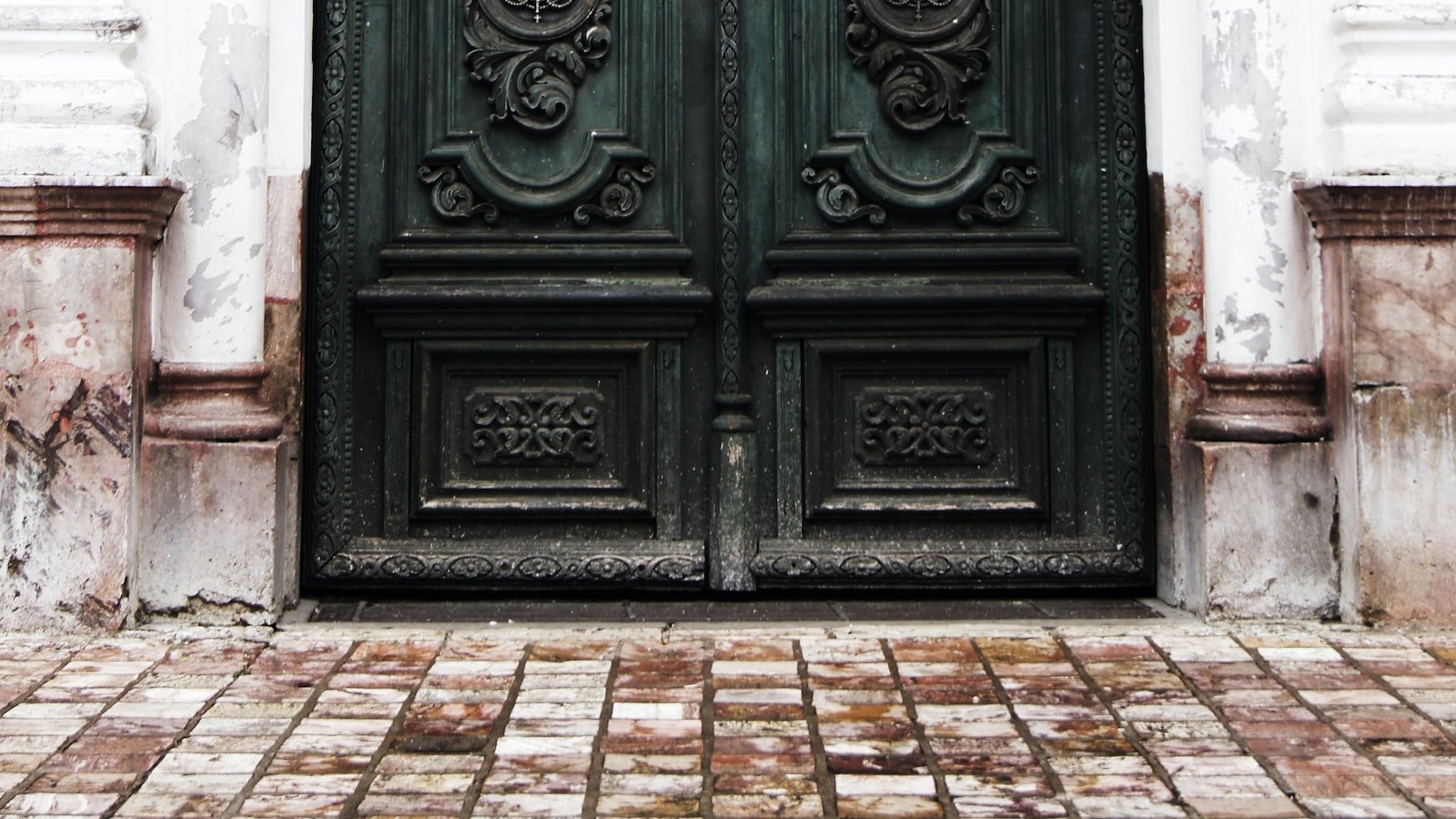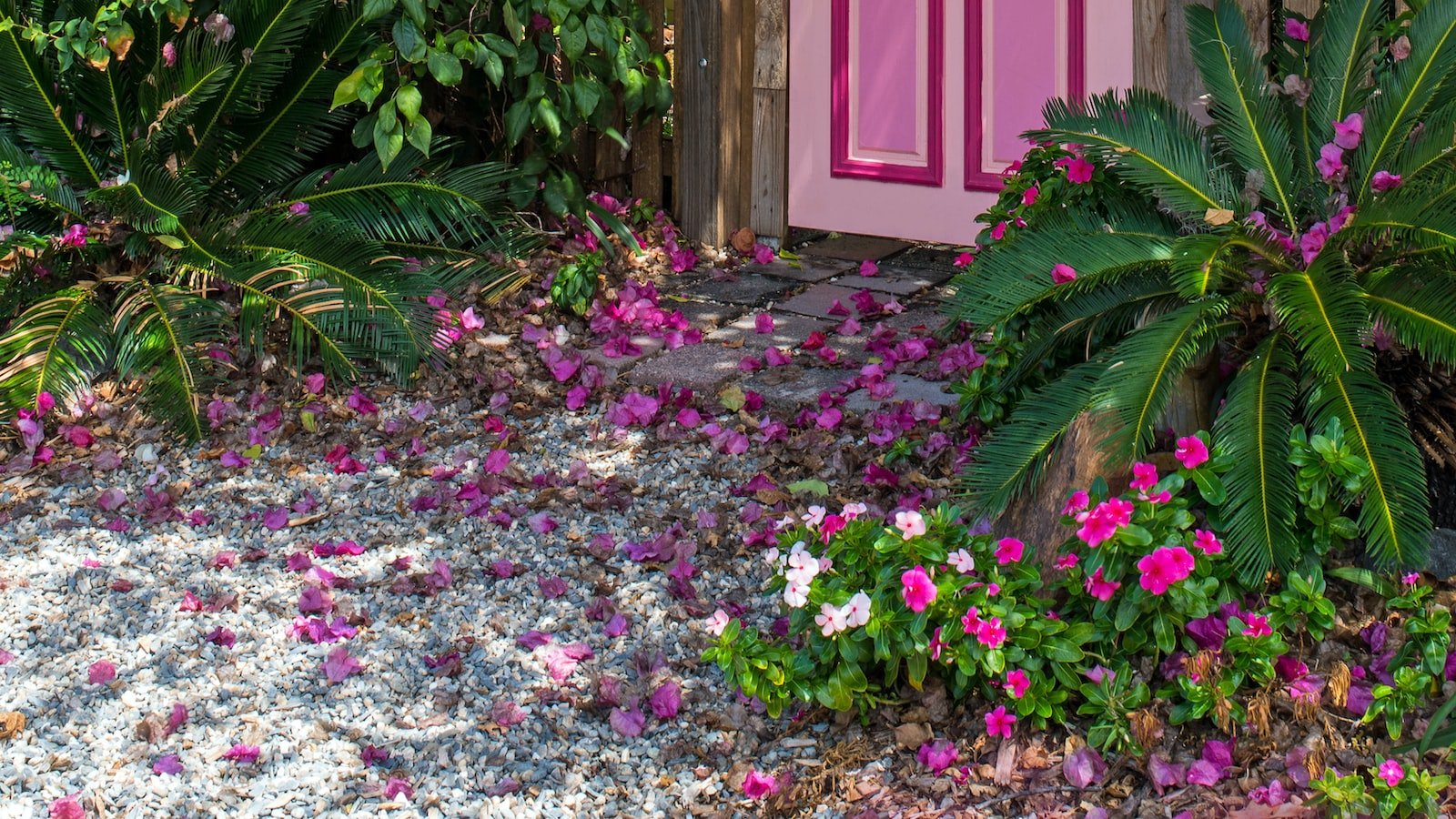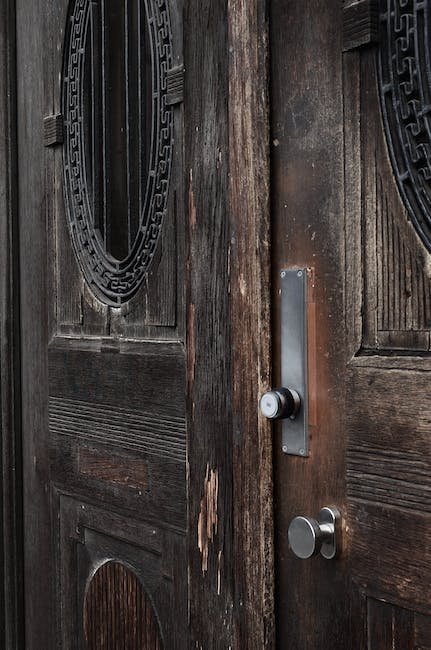Have you ever stopped to contemplate the humble door knob lock? While it may seem like an insignificant detail in our everyday lives, this unassuming device plays a crucial role in keeping our homes secure. Behind its simple appearance lies a fascinating anatomy that we often overlook. From its intricate mechanism to the materials it is crafted from, the door knob lock has a tale to tell. Join us as we embark on a journey to unravel the secrets of this unsung hero, and gain a deeper understanding of what makes it an indispensable component of our homes.
Table of Contents
- The Components of a Door Knob Lock: A Closer Look
- Understanding the Mechanism: How Door Knob Locks Function
- Common Types of Door Knob Locks: Which One to Choose?
- Essential Considerations for Proper Door Knob Lock Installation
- Maintenance Tips for Ensuring Longevity and Security
- Q&A
- Key Takeaways

The Components of a Door Knob Lock: A Closer Look
A door knob lock may appear simple and unassuming, but behind its humble appearance lie various intricate components working harmoniously to ensure security and convenience. Let’s explore these components and gain a deeper understanding of how they contribute to the functionality of this everyday essential.
1. The knob: The door knob is the prominent feature that allows us to open or close a door effortlessly. It comes in various designs, finishes, and materials to suit different aesthetics and needs. Some knobs even offer ergonomic features, ensuring a comfortable grip for users of all ages.
2. The latch: Nestled within the door, the latch is the key mechanism responsible for securing the door in its closed position. It consists of a metal plate that fits into a strike plate, thus preventing the door from swinging open. The latch can be operated by turning the knob or with a key, depending on the lock type.
3. The cylinder: The cylinder is the heart of the door knob lock, housing the intricate tumblers and springs that enable the mechanism to lock and unlock. It is here that the magic happens, with key pins aligning perfectly with each tumbler, allowing for a smooth rotation to operate the lock.
4. The strike plate: Attached to the door frame, the strike plate acts as the counterpart to the latch, ensuring a secure fit when the door is closed. It typically consists of a metal plate with an opening that aligns with the latch, allowing for a seamless and sturdy engagement.

Understanding the Mechanism: How Door Knob Locks Function
Have you ever wondered how door knob locks actually work? It’s time to unveil the secrets behind their mechanism. By understanding how these locks function, you can gain a deeper appreciation for the simple yet ingenious technology that keeps our homes secure.
At a basic level, door knob locks operate using a combination of mechanical parts. When the door knob is turned, it engages a series of interconnected components within the lock mechanism. One key component is the cylinder, which contains a series of pins that align with the grooves on your key. These pins are crucial in determining whether the lock will open or remain closed.
When you insert the key and turn the knob, the pins are pushed to specific heights, allowing the cylinder to rotate freely. Once the pins are perfectly lined up, the shear line is created, enabling the lock to open. Conversely, if the key fails to align the pins correctly, the shear line remains blocked, preventing the knob from rotating and keeping the door securely locked.
Features of Door Knob Locks:
– Pins and Springs: The pins and springs inside the lock cylinder function together to control the position of the cylinder and determine whether the lock is engaged or disengaged.
- Shear Line: The shear line is the critical point at which the pins align, allowing the cylinder to rotate and unlocking the door.
– Keyway: The keyway is the unique shape of the keyhole, which corresponds to the specific key used to open the lock.
– Mechanical Advancements: Over time, door knob locks have seen advancements in technology, including the introduction of keyless entry systems, biometric locks, and electronic keypads.
Understanding the mechanism behind door knob locks gives us a glimpse into the craftsmanship that keeps our belongings safe. So, next time you unlock your door, take a moment to appreciate the intricacy and reliability of this remarkable invention.
Common Types of Door Knob Locks: Which One to Choose?
When it comes to securing your home or office, choosing the right door knob lock is crucial. With a plethora of options available in the market, it can be overwhelming to select the one that suits your needs. To help you make an informed decision, let’s explore some of the most common types of door knob locks:
1. Deadbolt Locks
Deadbolt locks are among the most popular options for home security. They consist of a solid metal bolt that extends into the door frame, making it difficult to force it open. These locks typically require a key to open and are resistant to picking or bumping. Deadbolt locks are available in single cylinder and double cylinder variations, each with its own advantages and considerations.
2. Knob Locks
Knob locks are the most common type of door locks found in residential spaces. They are characterized by a doorknob with a built-in lock mechanism. However, it’s important to note that knob locks alone may not provide sufficient security as they can be easily compromised by forcible entry or lock picking. Therefore, it is advisable to use knob locks in combination with deadbolt locks for enhanced security.
3. Lever Handle Locks
Lever handle locks are commonly used in commercial or public buildings due to their ease of use, particularly for individuals with limited hand dexterity. These locks feature a lever handle that can be easily pushed down to engage the locking mechanism. While lever handle locks offer convenience, they may not provide the same level of security as deadbolt locks. It is important to assess your specific security needs before opting for this type of lock.
Choosing the right door knob lock ultimately depends on your security preferences, budget, and the level of protection you seek. Don’t forget to consider factors such as quality, durability, and resistance to common break-in methods when making your decision. Invest in a lock that offers optimal security and peace of mind for you and your loved ones.
Essential Considerations for Proper Door Knob Lock Installation
Installing a door knob lock may seem like a straightforward task, but it’s important to pay attention to several essential considerations to ensure a proper and secure installation. By following these guidelines, you can confidently enhance the security of your doors while maintaining functionality and ease of use.
- Choose the right type of door knob lock: Before beginning the installation process, carefully consider the type of door knob lock that best suits your needs. There are various options available, including traditional locksets, keyless entry systems, and smart locks. Understanding the different features and benefits of each type will help you make an informed decision.
- Check the door condition: Prior to installing the lock, assess the condition of your door. Ensure that it is structurally sound and free from any cracks or warping that could compromise the lock’s effectiveness. Additionally, verify that the door is properly aligned with the door frame to prevent any difficulties with the locking mechanism.
- Gather the necessary tools: Having the right tools at hand is essential for a smooth installation process. Common tools include a measuring tape, screwdriver, drill, chisel, and a hole saw. Double-check that you have all the necessary tools before starting to avoid disruptions during the installation.
By carefully considering these essential factors, you can successfully install a door knob lock that provides both security and convenience for your home or business. Remember to always read the manufacturer’s instructions accompanying your chosen lock, as specific installation steps may vary.
Maintenance Tips for Ensuring Longevity and Security
Regular maintenance is essential to ensure the longevity and security of your equipment or system. By following these practical tips, you can keep your assets functioning at their best and protect them from potential threats.
- Perform Routine Inspections: Regularly inspect your equipment or system to identify any signs of wear and tear. Look out for loose connections, leaks, or damaged components that may compromise performance or security.
- Keep Software Updated: Ensure that all software and firmware associated with your equipment or system are up to date. Regularly check for updates and install them promptly to receive the latest security patches and performance enhancements.
- Implement Data Backup Practices: Protect your valuable data by implementing regular, automated backups. Store backups securely offsite or in the cloud, ensuring they are encrypted and password-protected.
- Implement Strong Password Policies: Create a strong password policy for all users accessing your system. Encourage the use of complex passwords and facilitate regular password changes to minimize the risk of unauthorized access.
- Train Users on Security Best Practices: Educate your team on security best practices to mitigate the risk of human error or negligence. Provide comprehensive training on recognizing suspicious emails, phishing attempts, and other potential security threats.
- Regularly Test Security Measures: Periodically test your security measures to identify any vulnerabilities. Conduct penetration tests, review access control protocols, and ensure that firewalls and antivirus software are functioning optimally.
By following these maintenance tips, you can enhance the longevity and security of your equipment or system, ensuring seamless operation and peace of mind.
Q&A
Q: What is the purpose of a door knob lock?
A: A door knob lock is designed to provide security and privacy by preventing unauthorized access to a room or building. It acts as a barrier, allowing only those with the appropriate key or code to enter.
Q: How does a door knob lock work?
A: Inside a door knob lock, there are intricate mechanical components such as springs, pins, and cylinders. When the correct key is inserted and turned, the pins align at the shear line, allowing the lock to rotate and open.
Q: What are the various types of door knob locks available?
A: There are several types of door knob locks, including key-in-knob locks, cylindrical locks, tubular locks, and interconnected locks. Each type offers different levels of security and functionality, catering to specific needs.
Q: Are door knob locks effective in keeping intruders out?
A: While door knob locks provide a certain level of security, they are not foolproof and can be vulnerable to picking, bumping, or forced entry. It is recommended to complement them with additional security measures such as deadbolts or smart locks.
Q: Can I install a door knob lock myself?
A: Yes, installing a door knob lock can be a DIY project for those with basic handyman skills. However, it is important to follow the manufacturer’s instructions carefully to ensure proper installation and functionality.
Q: How often should a door knob lock be maintained?
A: It is advisable to regularly maintain your door knob lock to ensure its continued performance. Lubricating the lock, checking for loose screws or misalignment, and periodically inspecting the components will help prolong its lifespan.
Q: Can a door knob lock be rekeyed?
A: Yes, in most cases, door knob locks can be rekeyed. This is particularly useful if you want to change the key or prevent unauthorized access without replacing the entire lock. It is recommended to consult a professional locksmith for rekeying services.
Q: What should I do if my door knob lock gets stuck?
A: If your door knob lock becomes stuck or difficult to turn, try applying graphite lubricant or a silicone-based lubricant to the keyhole. If the problem persists, it is best to contact a locksmith to assess and repair the lock.
Key Takeaways
As we bring this riveting exploration of door knob locks to a close, we hope to have unravelled the enigmatic secrets held within this seemingly ordinary household item. Through our journey into the intricate anatomy of a door knob lock, we have uncovered the fascinating mechanisms that keep our homes safe and secure, revealing a hidden world of precision and craftsmanship.
From the durable exterior that shields it from the elements, to the captivating labyrinth of pins and tumblers hidden within, we have come to appreciate the complexity behind this unassuming device. Its modest appearance belies a symphony of gears and levers, working tirelessly every time you turn the knob, ensuring that your world remains protected.
But let us not forget the significance of the door knob lock beyond its technical prowess. It serves as a silent sentinel, guarding our sanctuaries and exuding a sense of trust and assurance. A familiar friend that greets us each day, it bears witness to our comings and goings, offering a steadfast presence that we often take for granted.
So, the next time you grasp that door knob, spare a moment to acknowledge the marvel that lies within. The countless hours of craftsmanship, the engineering ingenuity, and the unwavering dedication to security. Remember that it is not merely a lock, but a silent guardian, standing firm against the perils that lie beyond.
As we bid adieu to this wondrous exploration of the inner workings of a door knob lock, let us embark on our journey forward with a newfound appreciation for the ingenuity of human creation. For in every object that surrounds us, there exists a world waiting to be discovered, a universe of knowledge, waiting to be unraveled.
May this enlightenment accompany you as you step through the thresholds of your everyday life, forever mindful of the secrets and stories concealed within the smallest of things.
As an affiliate, my content may feature links to products I personally use and recommend. By taking action, like subscribing or making a purchase, you’ll be supporting my work and fueling my taco cravings at the same time. Win-win, right?
Want to read more? Check out our Affiliate Disclosure page.